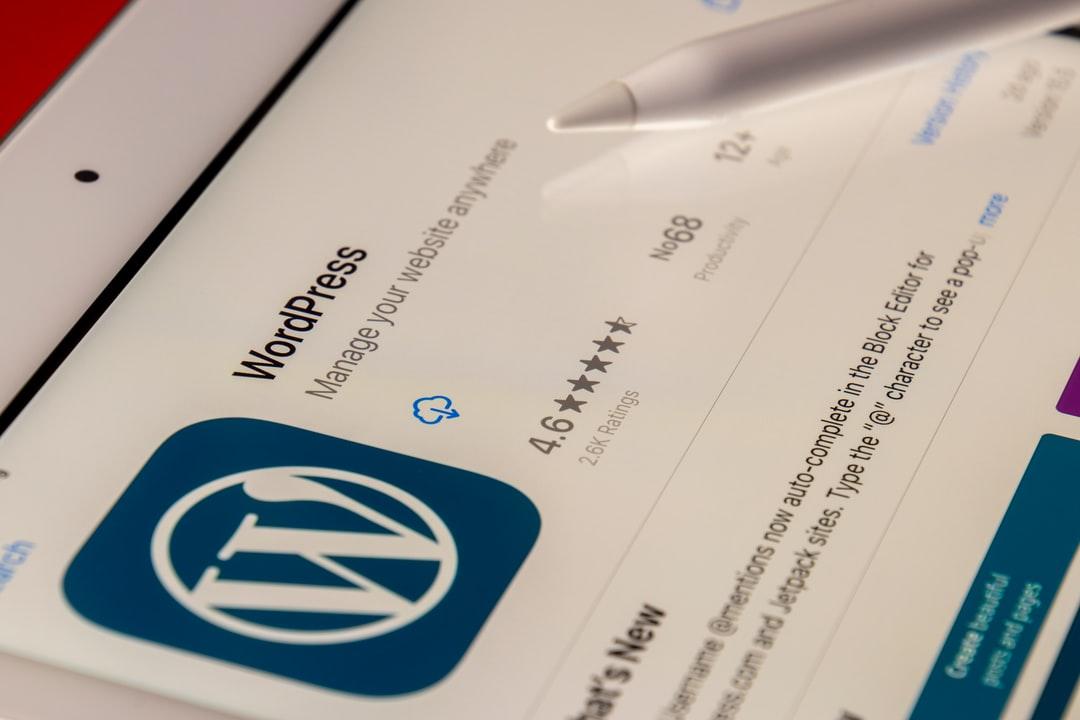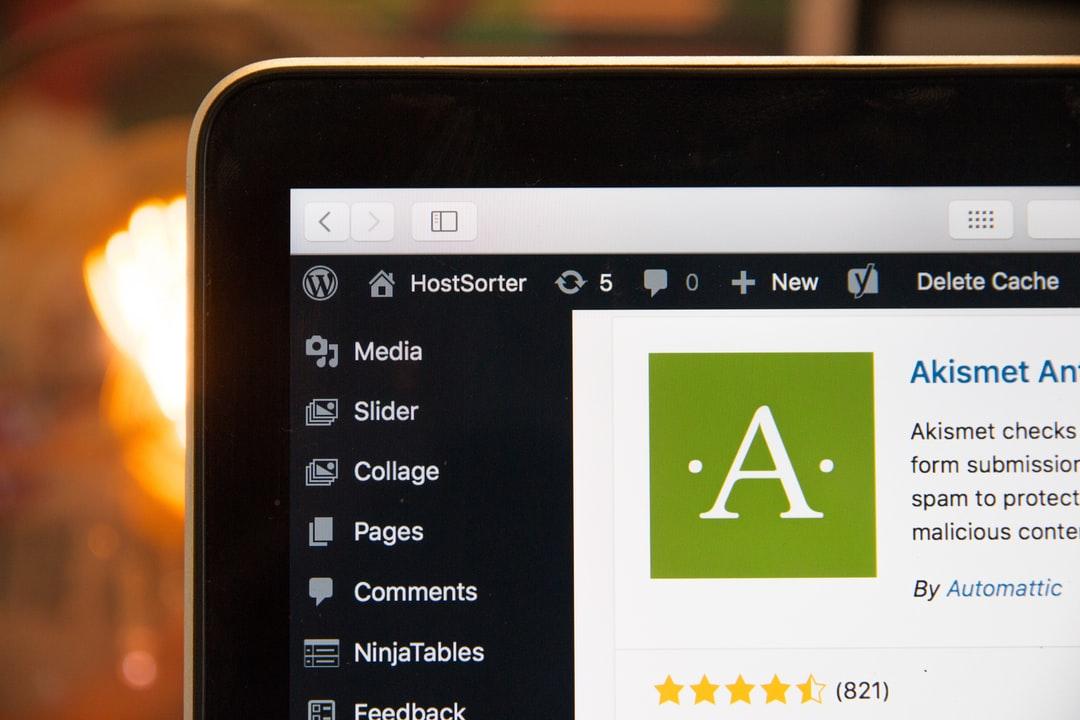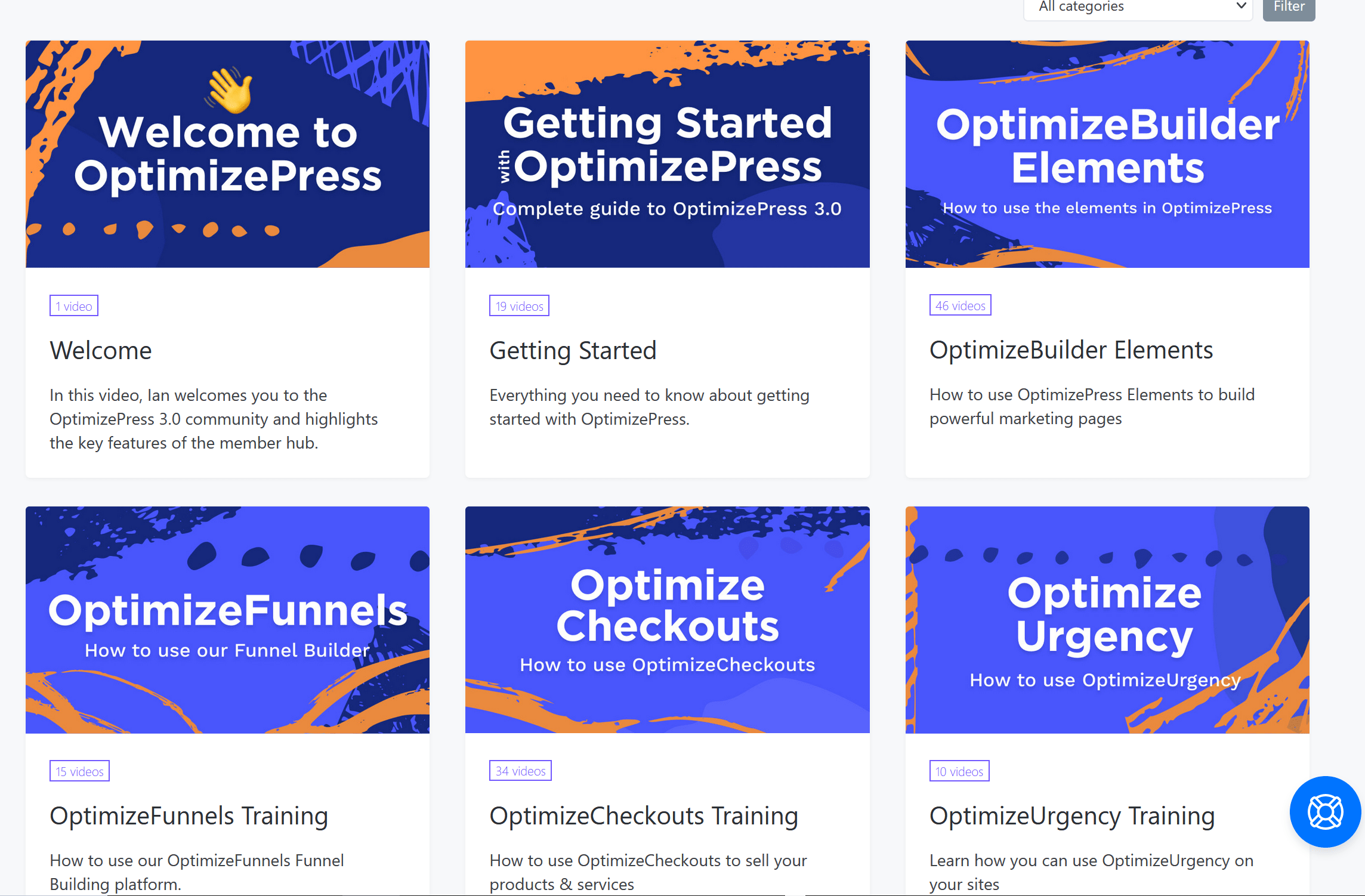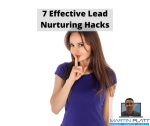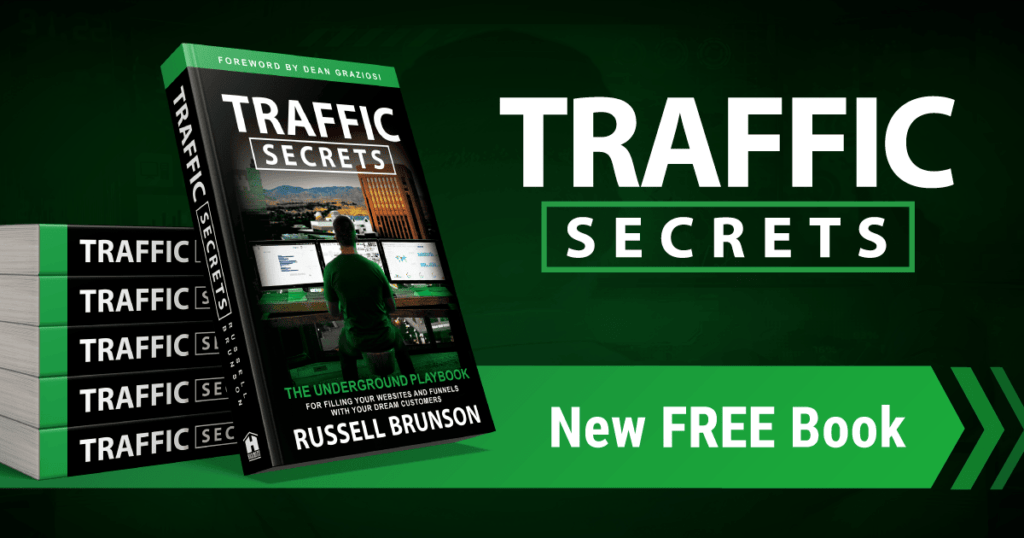The Ultimate Guide To Build A WordPress Website
Want to build a WordPress website? It's easier than you think. We show you not only how to build a WordPress website, but how to make it suit you as your business grows, and how you can make your website drive that growth. Curious how you can make that happen? Keep reading to find out how to get your keys to online success.
The thought of creating your own website may seem overwhelming.
You might even think this task is impossible for anyone but a developer or a person with a background in web design.
Well, I have good news for you — there’s a software out there that’s so easy to use, virtually anyone can successfully create a unique and professional-looking website for their business, blog, or portfolio. It’s called WordPress.
What Is WordPress?
WordPress is a content management system (CMS) that allows you to host and build websites. WordPress contains plugin architecture and a template system, so you can customize any website to fit your business, blog, portfolio, or online store.
But how?
This ultimate guide will cover a basic step-by-step process of creating your own WordPress website as well as a list of tips and tricks to remember while working with WordPress.
Read More
Build A WordPress Website - The Twist
The above article if you read it, it very involved. It makes creating a WordPress website seems super complicated. Fortunately, it isn't.
The reality of the situation is, you probably don't know a thing about WordPress. So what you need is tools that make it a lot easier for you to use. Yes?
WordPress is a commonly used website platform that allows us to create and maintain a website quickly and easily. It allows you to upload plugins that add functionality to the website. Read on to see how we can quickly build a WordPress website, and it be useful to us as internet marketers in the future as we grow out businesses. Read on to find out how.
Website Hosting
Hosting - the web server where your site lives - I use d9 hosting for the hosting provider for all my sites now. I have the Max+ package to host multiple sites - If you plan creating multiple sites, I'd recommend doing the same. It uses faster hard drives. You get free SSL certificates, so your new WordPress site runs under https, which also improves your rankings.
There are literally hundreds of options if you are looking for a hosting provider. But there is good web hosting and bad. Good web hosting will have loads of other features, such as being able to enable a content delivery network (CDN) for faster image loading. Shared web hosting can have hundreds or thousands of domains on a server, which may adversely affect your efforts to build a successful website. We careful that if you do get a cheap hosting package, that you get one that does not lock you in on a long contract, just in case the site performs poorly.
Bluehost are another very good hosting company that you might like to take a look at and see which you prefer. Bluehost has a range of hosting plan including shared hosting, which is the cheapest hosting plan. I know of a lot of friends that have used these guys and love them. Haven't used them myself, but put them here as yet another choice for your hosting.
My D9 hosting plan is shared hosting, but it's a lot faster than any other shared hosting that I've had before, as you can probably see when you click through my posts. You can definitely go for the super cheap hosting, but you get what you pay for in my experience - your site could be share with thousands of other sites, and if they go slow so will your site. This site I have never seen slowness like that, and I can easily upgrade to a better hosting plan should I need it. I recommend that you do that, with a reputable hosting provider that is focused on customer service, and understands the internet marketing niche (D9 hosting do).
A word on your web host and web hosting in general, you can go for managed WordPress hosting, which is "tuned" specifically for WordPress. If you're keen on that as an idea, take a look at Siteground. When you start out, your 10 visitors a day won't need such a solution, but further down the line, you might consider it, or your own custom server. You could even do a self hosted WordPress site, but I'm guessing that you wouldn't have the first clue how to do that. I do, and I wouldn't do it, no matter how much money I could save
A Domain Name
A Domain Name - You can use d9 hosting to purchase and set up the domain name, directly from their management tools. If you get stuck, you can ask them for help, but trust me, it's very easy. You search for and find the domain name you'd like, buy it, and you're done. Yep.
Install WordPress
Install WordPress - You go into the cpanel of your web hosting, and you find the group software, and click "WordPress manager by Softaculous". Fill in the fields, and you're done. Easy! You will be sent an e-mail to your nominated address that will give you your username, and your WordPress Login URL. Don't forget to save these details. If you do, so long as the email address is correct, you can reset the password, then use the details to use your WordPress login to access your WordPress dashboard. And you're away, you can start installing plugins, creating posts, the world is your oyster. Yeah, I know, whatever
See below for a video on how to install WordPress if you're getting stuck!
How to Install WordPress from CPanel
What the hell is CPanel, right? CPanel standard for control panel, but it's software that runs on your web host that helps you to configure and control how it works. It allows you to do all that technical stuff, but make it seem somehow.... less techie.
If you are using D9 hosting, then you select the hosting package, and then on the left hand side is a menu, that says "Login to CPanel". Click that. It will automatically log you into your CPanel. It looks a little like the picture below.
Once you are at this screen, watch the following video to learn how to install WordPress automatically. Please note that your CPanel might be slightly different, as the version changes quite regularly. The WordPress installer icon, might say "WordPress Manager by Softaculous" or something like that. If it says WordPress anywhere in the title, that's likely the right place. Here is the video to show you how to install WordPress on your web host form CPanel...
Website Builder for WordPress
Website Builder Plugin with Theme - Themes, you can pick something that looks really fancy, but runs really slowly. A free theme might be free, but if it stops you ranking because it's slow, it would be a bad idea. And your rankings suffer. Or you could pick something that is fast, and you can make it as pretty as you want. That's the website builder side of things. I use Smart Theme as the premium WordPress theme. It's well supported and used by some of the biggest sites on the internet. If you're just blogging, and don't want to capture leads, or have any funnels, then just get a nice Theme. I'm guessing that most of you want to make money, and therefore should read on.
The WordPress theme in its simplest form is just how the WordPress website looks, and you can change that from the WordPress dashboard, through Appearance, Themes. Or to access any advanced features such as with OptimizePress, you go to the WordPress dashboard, and select Theme Options. Most modern WordPress theme have theme options, because most themes also include other functionality, so that it runs faster, and doesn't require a lot of effort to make your WordPress website look awesome.
A premium theme is not guaranteed to be fast. I have purchased plenty of them that you have to get rid of later because that start getting slow. The part that you have to be particularly careful of is mobile speed - a fancy website is likely to have lots of scripts that may be hard to disable for the mobile version. I would recommend that you only get a premium theme that comes with a money back guarantee so that you can test the speed out for a reasonable sized page.
I use OptimizePress as a on this site, and in addition from allowing you to create whatever theme you want, it also allows you to create funnels, create engagement popups, do make sales from the site. In addition it has some basic caching built in, and will also convert any images you put into posts using the OptimizePress builder into webp format (which is a lot quicker).
Once you have downloaded OptimizePress dashboard, upload the plugin to WordPress you're almost ready to go. You can download the smart theme that comes with it, and activate it. This page is using it, as you can see, you get social sharing buttons for free. And you have control over doing lazy loading images (not loading until the come into view), and a sticky header (at the top of this site with the logo and menu), and hero block (the header block at the top of the post).
This theme absolutely blew me away when I first used it. It's super easy to use, has a whole bunch of training on their site, and does pretty much everything you'd need it to when you first start out. And a lot more besides.
Once you have activated the OptimizePress smart theme, you can integrate your auto-responders to capture email addresses. For this I use aWeber - long term its got some great features, easy to use, and good value for money certainly for a beginner. And you get 30 days free. Once you have connected that up, you can set up the opt-in forms in the theme, and you get what you see on the top left. Feel free to opt in to receive other posts and information from my site.
One other plugin I have behind the scenes is Blog2Social. It sends posts to your social media accounts. That's so that people get to find your site, and read your content.
That should get your site up and running.
Then you need to tweak it up for the purpose that you are using it.
You use the features of OptimizePress to build the website to be useful for your customers.
It doesn't need to be any more complicated than that. If you need to do more over time, you'll work it out, but this setup will get you started nice and quickly.
As you can see there are social media buttons to the left, you can switch these off from the WordPress theme, but they're awesome already. Feel free to share this post to your site to see how easy it is, and if you like this post! If you didn't have this, you'd need a plugin like AddThis or WP Socializer. Both very good.
Other WordPress plugins to consider
A WordPress plugin is additional WordPress software that you can upload to your WordPress site that will add additional functionality. This means that you are able to customize how your site works, depending upon what you need it to do. But beware, too many plugins will slow your site down, and plugins that are not well written may cause your site to behave strangely. If that happens, just disable the plugin, and see if the problem goes away. If it does, look for a different plugin to do what you need it to.
Below are a list of things that you might want to include as a WordPress plugin on your site.
- Website Builder - OptimizePress is great, I use it here. This helps you build your WordPress website the way you want to. This can include funnels, contacts, optin blocks, and so on. Without a website builder, you would probably need a ton of other plugins, which may slow your site down.
- SEO plugin - I use RankMath, but Yoast SEO is also good. This helps you rank in the search engines
- Contact form - OptimizePress can use an opt-in box, or you can add a plugin if you want more - OptimizePress recommend Clean and Simple Contact form.
- WordPress Security - Loginizer - You can select this during WordPress installation or add it afterwards. There are more complex security plugins, but to start with, something simple should be okay. Just make sure you have backups taken regularly.
- Comment Spam - Akizmet can be used to organise your spammy comments for you
- Advertizing plugin - See below for more on this, but if you wanted to put in ads from a third party, delivered through a script, you can use "Ad Inserter".
- ECommerce plugin. If you want a store you will need a special plugin, although OptimizePress does have a shopping cart, it is not intended to be used to create an eCommerce store. eCommerce is not necessary if you want to sell digital products through a sales funnel. If you need to do that, then it would be a good idea to look at WooCommerce.
Other WordPress website considerations
There are other considerations to how you create a new WordPress post, and what you want visible on your page. OptimizePress has options to customize the layout per post, although I find that the site wide default if fine for standard posts.
If you have enough posts on your site, you can start to monetize it. AdSense is one way to do it, although this can slow down your site a little.
Another way can be to put banner images linking to affiliate products in your sidebar in a widget (image) or in the posts directly. The benefit of this is that you don't have to be approved to start it, and you do have a shot at making money, if those suggested are related to your blog, and helpful to your customers. Don't go overboard though!
You will probably need to install Google Analytics to track visitors to your website. You need to create an account, add a property for your website. Then you add the code to the website. There's a spot in OptimizePress to do that, in theme options, under custom scripts. The video below will show you how to install Google Analytics.
Google Analytics Tracking
You use Google Analytics to track page views, and actions on your site. You need to install it into you OptimizePress theme options. You got to install it under Appearance, Theme Options, Custom Scripts. You copy the code from the script tag in Google Analytics, and paste it in there. See the video below if you're struggling to make it work.
It is very important to know how many visitors you are receiving, and which pages are the most popular, so that you can improve your content to make more of it popular.
You can also do things such as seeing the sorts of browsers, languages, and countries people came from and are using to view your content. You can also find out about people's interests, to better understand if a traffic source aligns to their interests, and to your content.
How to Use OptimizePress in WordPress
OptimizePress is an awesome website building plugin for WordPress. It is an absolute beast, it can do so much cool stuff. I'm not going to try to give you training on how to use it. Instead you can watch this video. Underneath, I will also link to tutorials from OptimizePress so you can see what it can do from the horse's mouth, so to speak.
There are some awesome tutorials within the members area to do everything, here is a screenshot, to give you an idea.
Blog Content Ideas
The big thing with a blog is consistency - by this I mean being consistent with creating blog posts. This will create a consistent signal to the search engines that you are regularly providing value for your visitors. This in turn, using the methods seen below, will turn into increasingly more traffic to your website.
One of the big problems, especially when you're first starting out, is content ideas. What to write about. How to write about it. What unique spin to put on the article. How it helps your visitor, and what in turn will they do once they've read it? You want them to take some action, otherwise, why write the blog post in the first place? Even if all it is, is asking the reader to share the content with others. The point here is it could be that you want your visitors to buy a product - but don't write articles that focus on that. Help your visitors first, help them enough so that they become your customers because they trust you, and you deserve it because you have already provided so much value.
Okay, so how do you come up with content ideas for your WordPress post? Watch this video to get more ideas. I use this all the time, because it's really useful for generating ideas, and tracking results of many projects. Take a look below what it can do for you, and how to generate a ton of content ideas for your next WordPress post.
Getting Traffic To Your New Website
I'm going to shoot from the hip here, if you don't get traffic to your website, you'll quickly lose interest, and your domain name will likely end up on the scrapheap of domains on the internet. Yep. Been there, done that.
So you should be looking for ways not only to technically build a website, but also get some traffic to it, so that you get some visitors. Then you are at least in with a shot of being able to make the site a success, which is probably to make money.
Reading a WordPress tutorial on how to put together a blog is one thing, making the blog a success is quite another. There's a ton of information out there on how to get traffic, and here is just one nice and simple way that you could do that.
The idea that you create content, and it will promote itself, may have worked in the early days of the internet. Nowadays creating content and expecting is to go viral on its own is a little like winking at your date in the dark.
Get FREE Traffic To Your WordPress Website with SEO
Yawn. SEO. Right?
I have to admit, I've tried it, been slapped by Google, and thought what a pointless exercise it was. The problem for me was that I was trying to game the system - so was everyone, and that's why Google had all those algorithm updates.
But.
You can with a little bit of knowledge put together content that will naturally rank in the search engines, and therefore get you free traffic.
Let me tell you about SEO - you need to do enough so that the search engines understand what your post is about, but not so much as it looks like you faked it. I mean, in an average day, do you say WordPress hosting multiple times in a sentence so that WordPress hosting has clearly been forced as the subject of conversation (which is WordPress hosting). You get the idea...
Don't overstuff your content with keywords. You need to hit the point to make the content informative and natural, and naturally has keywords that you want to rank for in it. But definitely don't over SEO things.
The SEO plugin sort of does that for you - if you can get 90%+ on one of these, chances are that you're heading in the right direction. In this case your on-page SEO efforts should get noticed and lead to more website traffic.
Let's be clear, this probably won't happen overnight. But if you write one really good blog post on your blog that might be enough to start the influx of website visitors to your site.
Then from that one really good post, they see the other posts, which are also really good, and helpful. They share, comment, and promote your awesome work, and your website starts to get noticed.
Honestly, that never happens. Or at least it hasn't to me anyway. It's more like I mash out a bunch of content that I think is really good, nobody see it, and there it sits. The most awesome content that nobody ever saw. If there were an award for unknown awesomeness, I think I'd be in with a shot!
So what you do instead is you create a bunch of helpful content for your visitors. Each extra bit of content generates a little bit more traffic. Over time this will accumulate up until a point where your site is getting more traffic that your competitors. Then, well, game on.
But, if you don't get noticed by the search engines, and just rely on the basics from your SEO plugin, then none of the above will happen. There is some effort involved. Not a lot, but it's worth knowing, and putting into practice.
You have to understand the intent of search engines, and then of SEO. Search engines want to find the content that is the most relevant, so that visitors find what they are looking for. The search engines can then load up ads that are related, and most relevant and make money. SEO is supposed to be optimizing our sites so that they get the best ranking on the search engines.
The problem with this is if our SEO efforts lead to things that are not what would naturally happening, then they are a manipulation. And if they are a manipulation, its just a case of time before the search engines notice, and discount it as a factor. And your site, because it uses that manipulation will be penalized.
So what you need to do is, just enough to get the content noticed by the search engines correctly, and nothing more. If you are building links to the content, then do so in a helpful way, and also vary the types of links. So not all comments linking back to your site, find other ways, like guest posting, or article marketing.
Watch this.



